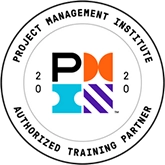Curing Ecosystem Blindness: Your Company’s Place in the Business Ecosystem
Today’s organizations are deeply embedded in complex ecosystems. Understanding your company’s space in its ecosystem can help you anticipate market challenges and help your company thrive during change.
Traditional thinking envisions companies as rivals, battling each other for dominance and profit. Today’s organizations operate in a more complex world. They integrate competition and cooperation in innovative and unexpected ways and they need each other in order to survive. These complex relationships are best described as ecosystems.
An ecosystem is a dynamic web of inter-dependent organizations that rely on each other for success. The ecosystem can make or break an organization. Yet ecosystem blindness—the inability to understand and describe a company’s ecosystem—pervades organizations. Most leaders fail to comprehend the complex web of relationships in which their company operates and, as a result, create fundamentally flawed strategies. Continue reading to learn how to cure ecosystem blindness and benefit from knowledge of the complex web of relationships surrounding your organization.
An Ecosystem Crashes
In 2006, the Boston Globe Magazine covered a dramatic story of ecosystem failure. The tale focused on a Rhode Island bookkeeper who embezzled 9 million dollars over the course of six years. Before she was discovered, a host of businesses popped up to support her extravagant spending. A horse trainer, thrilled by her new client’s appetite for all things equestrian, committed herself full-time to the embezzler's projects. A horticulturist turned away new customers for three months in order to create the floral design for a lavish wedding planned by the embezzler.
In time, the embezzler was discovered. She lost her job and landed in jail. However, the ripple effect from her crime spread across the ecosystem. The horse trainer was forced to close her business due to lack of clients. The horticulturist was sued for the embezzled money paid to him. The company from which the bookkeeper had embezzled was forced to lay off staff and close locations. This ecosystem crashed suddenly, dramatically, and fatally.
Luckily, most organizations don’t experience situations so extreme. However, all companies are part of complex ecosystems that have the capacity to thrive or crash. Understanding your ecosystem—and curing your ecosystem blindness—will help you and your organization thrive.
Curing Ecosystem Blindness
Ecosystems are complex and ever-changing. While it is impossible to fully map an ecosystem, leaders can develop insight into the dynamics and interdependencies of their ecosystems. To begin understanding your ecosystem, start by identifying entities.
Ecosystem entities are organizations that your company depends on in order to do its business. Entities can include supply chain partners such as suppliers and distributors. However, the ecosystem approach goes beyond the traditional supply chains to examine the more complex web in which a company operates. This web includes the networks, resources, people, and ideas that fuel your company.
To identify entities in your business ecosystem, ask these questions:
What and who does the company depend on in order to operate?
Most companies have hundreds, if not thousands, of companies, people, ideas, and materials that are critical for its operations. Start by listing supply chain partners. Then consider other entities that provide critical resources, services, or ideas to the organization. For example:
- The government recognized years ago that spouses of enlisted soldiers make up an important part of the military ecosystem and need support services.
- Pharmaceutical companies require patent attorneys, researchers, and clinical trial participants in order to be successful.
- Hollywood's ecosystem contains the obvious actors, directors, producers, and cinematographers, but also relies heavily on the media to promote its products.
What companies must succeed in order for customers to use the company's products and services?
In an ecosystem, other companies must succeed in order for an organization to achieve its goals. For example, Michelin cannot sell tires unless people buy cars. Century 21 won't make its revenue targets unless banks grant home mortgages to prospective buyers.
Once you have a list of critical entities (don't aim for an exhaustive list — it will take too much time and it will probably change before you've finished), look at the role each plays in the ecosystem.
- Keystones.1 Keystone organizations are the centerpieces of the ecosystem, generating metaphorical food for others. They accept a broad view of success by inviting partners to expand, grow, or innovate on their core products.
- Microsoft is a good example of a keystone organization. It creates products, such as Windows and Microsoft Office, which provide sustenance and livelihood to the many organizations that have emerged to support them. For example, software companies develop specialized packages to run on the Windows operating system. Trainers, resellers, developers, and system integrators all benefit from their association with Microsoft.
- Niche Players. Niche players grow in relation to the keystone organization and profit from their proximity to it. Each niche player develops a specialized place within the ecosystem, developing unique products or services that fulfill a particular need.
- For example, Priceline.com carved out a specialized niche by offering online bidding for low-cost airline fares. The company couldn't exist without Southwest Airlines, American Airlines, and their competitors. Yet Priceline developed a sweet spot for itself within the travel ecosystem by offering a unique service.
- Recyclers. Recyclers fill a special niche that deserves mention. These companies follow larger companies and transform the remnants of their work into a viable business. An obvious example is the growing green clothing industry that transforms used soda bottles into attractive fleece jackets. However, recyclers are not always as obvious.
- For many years, independent consultants were the recyclers of the management consulting ecosystem. These small boutiques, known for their capability to help people adapt to organization change, came in after large firms implemented enterprise resource planning (ERP) systems without considering the impact on employees. As recyclers, the boutiques gathered the detritus from the ERP implementation—morale issues, performance problems, resistance to change—and transformed it into thriving practices. Today, as systems implementers build change management skills to complement their technology expertise, opportunities for their boutique recyclers are waning.
- Commodity Providers. These organizations provide simple, transactional services to organizations in the ecosystem. For example, ADP and Aon provide payroll services across ecosystems. Companies in India, China, and other rapidly developing countries sell low-cost coding services, leaving the more complex business analysis and technological architecture functions to on-site staff. These commodity providers can face stiff competition. Yet they play a vital role to the survival of ecosystem companies. Imagine what would happen if a company suddenly lost its ability to pay employees!
Now That You Can See the Ecosystem...
Michael May, who regained sight after 43 years of blindness, initially had difficulty making sense of the visual world. Likewise, leaders becoming aware of their ecosystem for the first time may initially feel overwhelmed and unable to synthesize the information.
Until ecosystem competence grows, get the habit of scanning the ecosystem for warning signs:
- A keystone organization that is failing, facing financial crises, or changing direction
- A niche that is rapidly being crowded with competitors or that is becoming obsolete
- A recycler that cleans up after companies that are becoming more efficient and leaving less behind
These early warning signs can help you anticipate challenges before they arise and develop plans that will help your company thrive during change.
About the Author:
Maya Townsend, MSOD, is a Trainer and Consultant for Corporate Education Group. Maya is also Founder and Lead Consultant for Partnering Resources, where she specializes in leadership, strategy and collaboration. During her career, Maya has successfully designed and facilitated training programs to over 5000 people in groups of 3 to 130 in the public and corporate sectors. Highly intuitive, analytical, and imaginative, Maya works at all levels, from CEOs to line workers, to develop the relationships, ideas, connections, and interdependencies that shift an organization to the next level of productivity and performance.
1The concept of the keystone organization was developed by Marco Iansiti and Roy Levien in their 2004 book, The Keystone Advantage: What the New Dynamics of Business Ecosystems Mean for Strategy, Innovation, and Sustainability (HBR Press).
For more information on this topic, as well as how Corporate Education Group can help power your organization’s performance, contact us via email or call 1.800.288.7246 (US only) or +1.978.649.8200. You can also use our Information Request Form!


- ©2026 Corporate Education Group, operated by CEG Operating Company, LLC. All Rights Reserved.
Privacy Policy | Terms and Conditions - Corporate Education GroupSM and Learning That Powers PerformanceSM are service marks of Corporate Education Group, Inc., PMI®, PMP®, CAPM®, PgMP®, PMBOK®; and the PMI®; Registered Education Provider logo are registered trademarks of the Project Management Institute, Inc. CBAP® and IIBA® are registered trademarks of International Institute of Business Analysis. All other trademarks mentioned on this site are property of their respective owners. All rights reserved. CEG is an approved Authorized Partner within the Blanchard Authorized Partner Program and is licensed to market, sell, and train SLII®.
